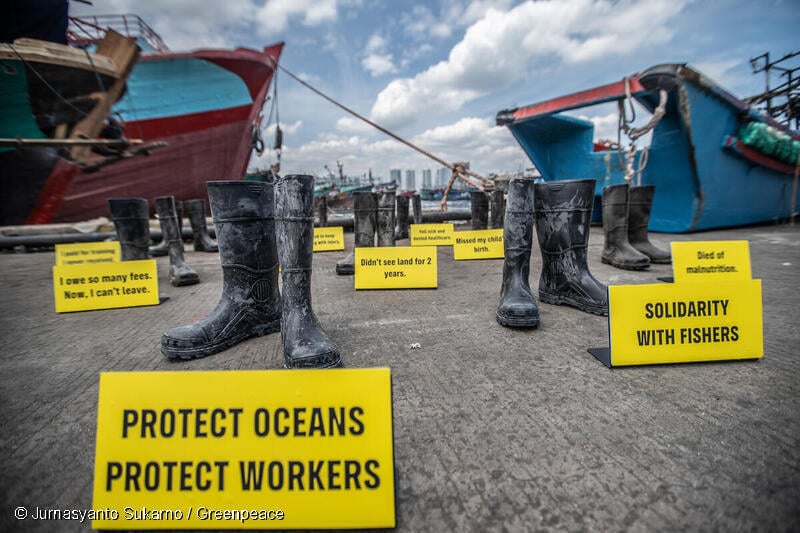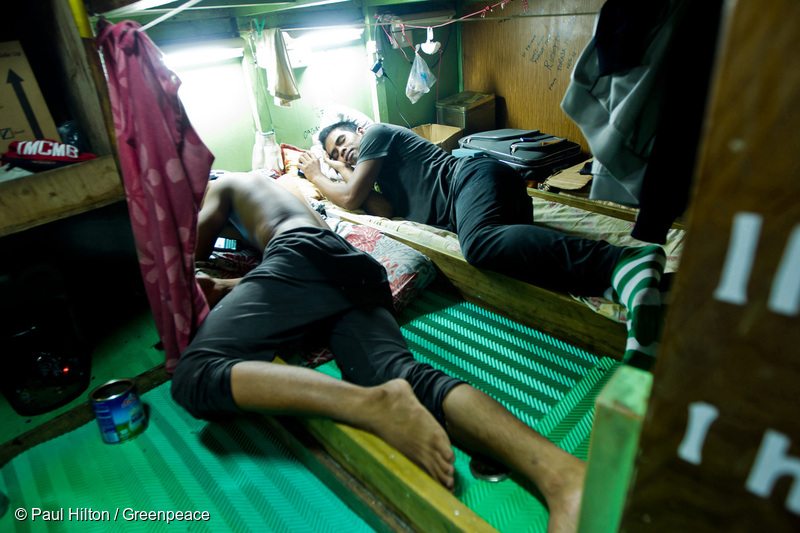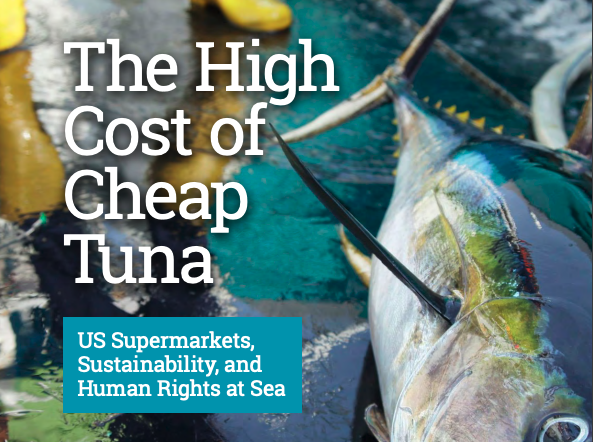Over 80 percent of the tuna sold in the US comes from unsustainable, destructive sources
Over 80 percent of the tuna sold in the US comes from unsustainable, destructive sources
Washington, DC – In its first-ever US canned tuna ranking, Greenpeace found that the vast majority of the tuna sold in the American market fails to meet fundamental sustainability standards. Among the worst performers are the big three brands, Bumble Bee, Chicken of the Sea and StarKist, representing a combined 80 percent of the US tuna market.
The ranking, included in Greenpeace’s 2015 Canned Tuna Shopping Guide, looked at 14 well-known US national and private label supermarket brands and concluded that most do not have adequate measures in place to address both sustainability and the human welfare and labor issues that plague the industry. Eight of the 14 tuna brands evaluated received a failing score, including retail giants Walmart and Kroger.
“Consumers should know that popular and trusted canned tuna brands are contributing to ocean destruction at an alarming rate,” said Greenpeace Seafood Markets Lead Graham Forbes. “While the biggest brands have thus far refused to offer sustainable tuna, the silver lining here is that other companies are stepping up to provide ocean safe options for their customers.”
Wild Planet, American Tuna and Ocean Naturals received the top scores and were identified as the best choices for US tuna consumers – all offering ocean safe products. Each brand has a comprehensive approach to sustainability and sources from operations striving to be fair and socially responsible. Whole Foods finished near the top tier for selling only more responsibly caught tuna. Hy-Vee and Trader Joe’s also ranked near the top, but continue to have some outstanding sustainability concerns.
The tuna ranking evaluated the sourcing policies and practices of the 14 brands, including whether the fishing method used to catch their tuna harms other marine life, whether they avoid shark finning, and whether they can trace their products back to the sea. In addition, Greenpeace examined how equitable and socially responsible the brands are. Poor working conditions are systemic in the tuna industry, and in the worst cases, human rights violations and slave labor take place.
The US is the largest market for canned tuna in the world and the primary global market for albacore tuna, a species mostly caught by longlines. Longline fishing consists of multiple hooks on a single line that can stretch for miles. The longline fishery is less regulated and can be highly destructive when measures are not employed to mitigate bycatch. Thousands of tons of seabirds, sea turtles, sharks and other marine life are hooked and then left to die on the lines. Up to 35 percent of the longline catch can be species other than tuna, many of which are already vulnerable.[1]
“Unfortunately, dolphin safe does not mean ocean safe. Turtles, sharks and other vulnerable ocean life are collateral damage in tuna fisheries that supply the US market,” added Forbes. “The big players have a responsibility to join forward-thinking brands in building a more responsible tuna industry. As the market continues to shift, selling products that are bad for our oceans will be bad for business.”
The US tuna ranking is part of a global Greenpeace campaign to transition toward fair and sustainable global tuna fisheries for our oceans and ocean-dependent people. In addition to the ranking, Greenpeace developed a “Decoding the Can” page to assist consumers with the various labels and options on a tuna can. To view the entire Canned Tuna Shopping Guide, please visit: http://www.greenpeace.org/usa/tunaguide.
###
Contact: Perry Wheeler, Greenpeace Media Officer, P: 202-319-2461
[1] http://www.spc.int/DigitalLibrary/Doc/FAME/Reports/Molony_07_PurseseineLonglineBycatch.pdf



